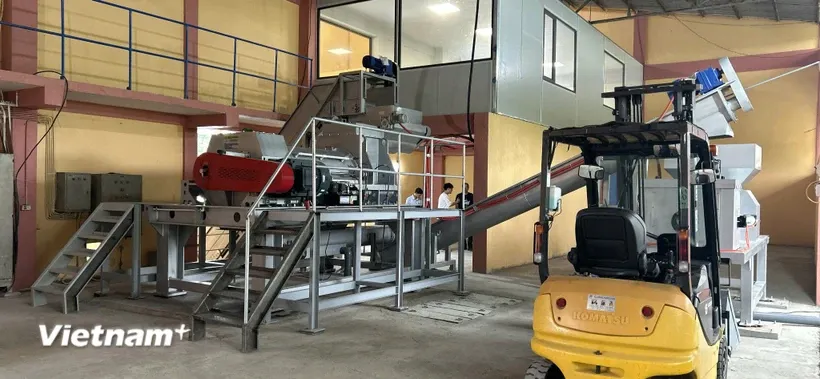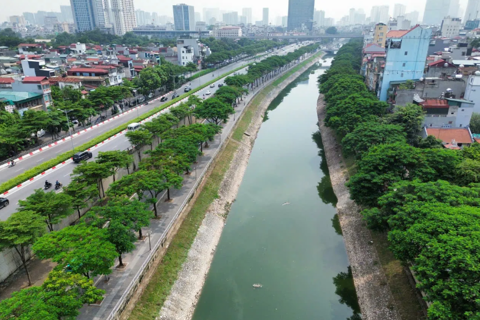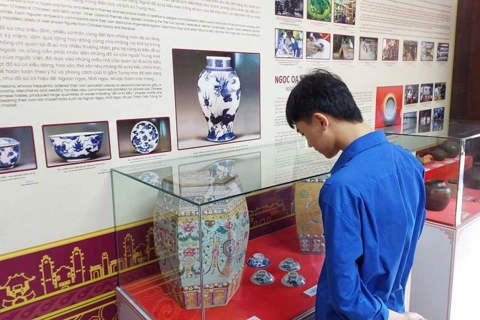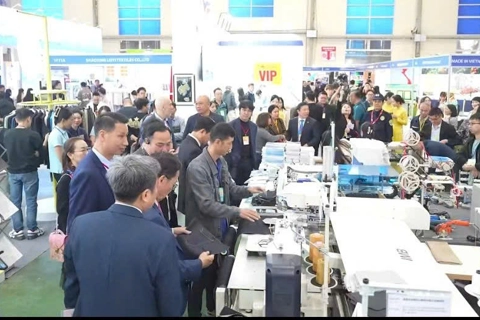Organic waste treatment plant commissioned in Hanoi
The treatment results in no secondary emissions, such as leachate, insects, or bad smell.
THE HANOI TIMES — The Phu Minh organic waste treatment plant in Hanoi's outlying Phu Xuyen District was put into operation in response to the Month of Action for the Environment (in June), which had a global theme of "Beat Plastic Pollution."
According to environmental experts, the plant's application of advanced technology will enhance the quality of treated organic waste, given that environmental pollution is a pressing issue.
Operating the plant also provides an opportunity to transition to a circular economy in Hanoi's rural areas.
“The commencement of operations at the Phu Minh organic waste treatment plant is a significant step forward for Hanoi’s environmental management sector. It also reflects domestic enterprises' growing capacity to master advanced waste treatment technologies," said Nguyen Trong Vinh, Vice Chairman of Phu Xuyen District People's Committee.
The facility is expected to significantly remedy the area's organic waste problem with its fast semi-dry fermentation technology.

Phu Minh organic waste treatment plant in Hanoi. Photos: VNA
Nguyen Phuc Thanh, General Director of Thang Long Environmental Services JSC, which operates the Phu Minh plant, said the facility's mechanized waste collection, classification, and on-site treatment can process 120 tons per day.
The plant's fast semi-dry fermentation technology enables quick waste treatment (fast fermentation). It operates a closed, semi-automatic equipment chain that saves the district more than 20% on waste collection, transportation, and treatment expenses. This technology is also suitable for waste-to-energy incineration.
Moreover, the new site can significantly decrease greenhouse gas emissions. Specifically, treating 100 tons of organic waste with the new biological technology reduces CO2 emissions by over 25,000 tons per year compared to incineration technology and over 55,000 tons per year compared to landfills.
Hanoi sees the plant as a major step in modernizing waste treatment and reducing pollution caused by waste buildup in urban areas. The city plans to launch similar projects in other districts to reduce transport costs and ease budgetary constraints.
Environmental experts said that Hanoi needs an urgent, optimal waste treatment solution. They argued that building modern waste treatment facilities and practicing waste sorting at the source are key to improving the city’s waste treatment capacity.
Hoang Duong Tung from the Vietnam Association for the Protection of Nature and Environment told the Vietnam News Agency (VNA) that Hanoi's biggest waste treatment issue is burying garbage. This outdated method leads to overcrowded and unsanitary landfills.
"Rather than opening more landfills, Hanoi should invest in modern waste treatment technologies. The first steps include speeding up land clearance and construction of waste treatment areas," Tung said.
Statistics from the city’s Department of Construction showed that the city produces more than 5,000 tons of domestic waste daily. The Nam Son Waste Treatment Complex processes an average of 4,000 tons of waste per day, while the Xuan Son Complex handles the rest through combined incineration and burial.
Hanoi plans to build 17 solid waste treatment facilities by 2030 to process 90% of construction waste and recycle at least 60% into building materials.











